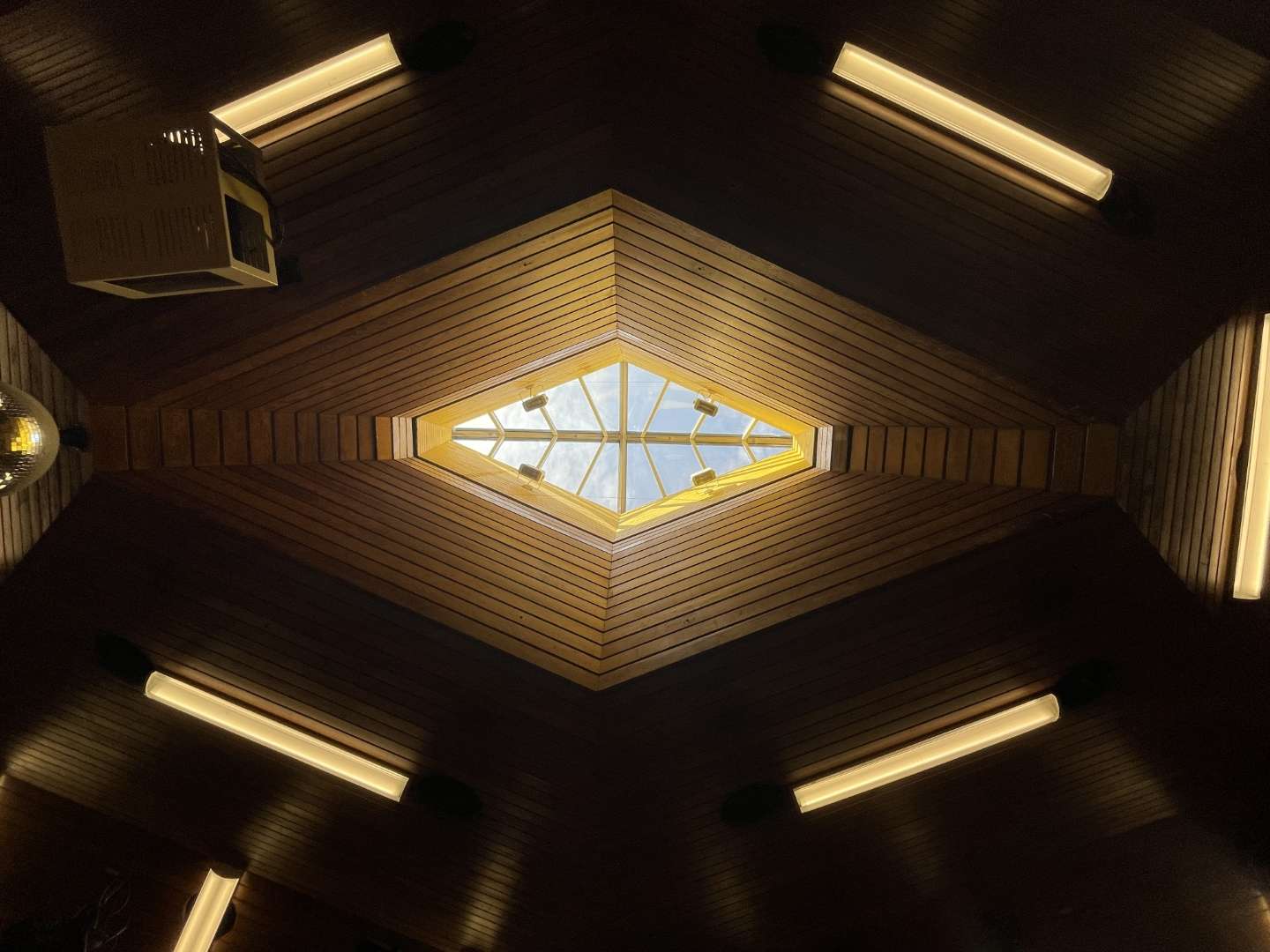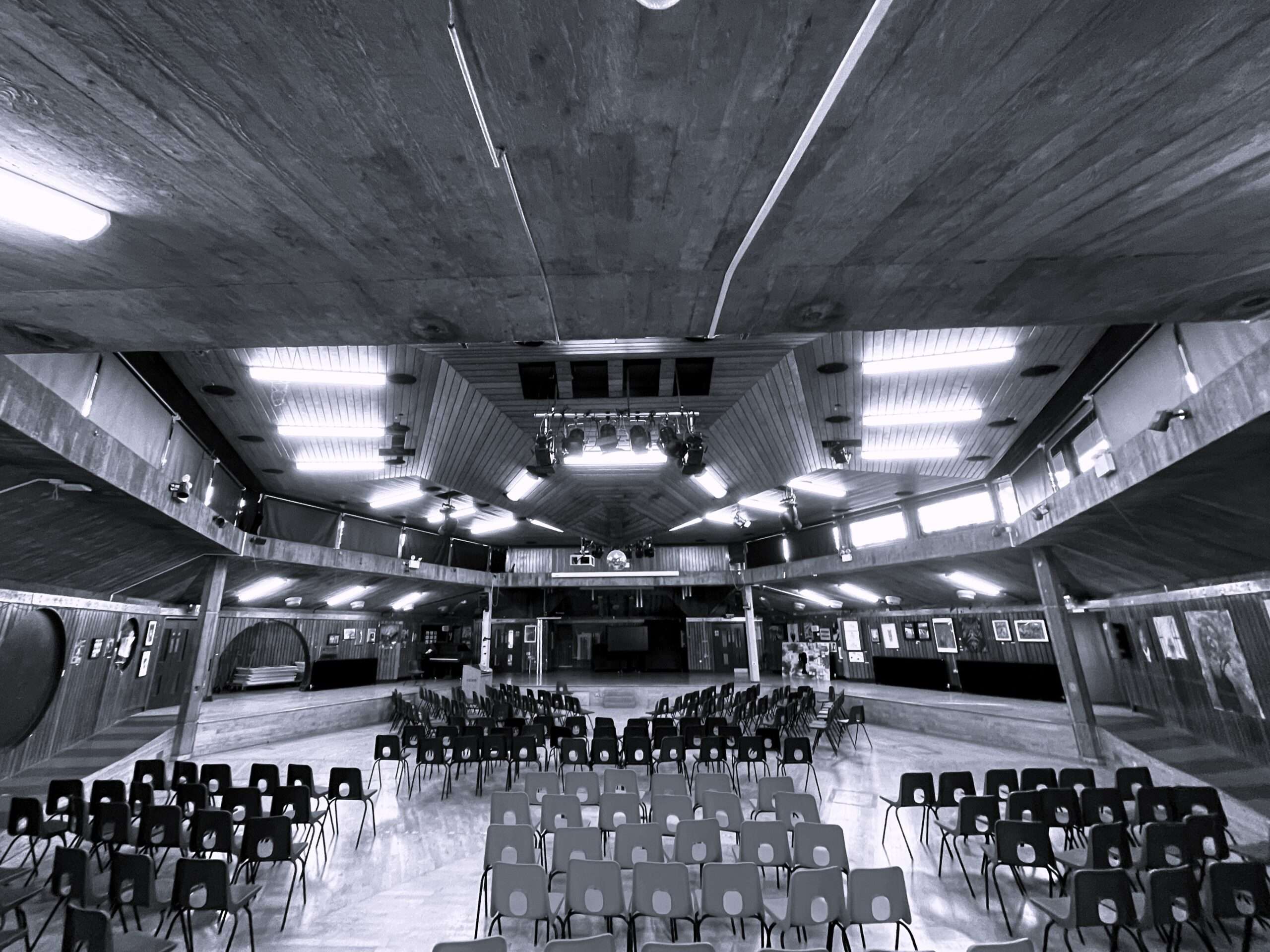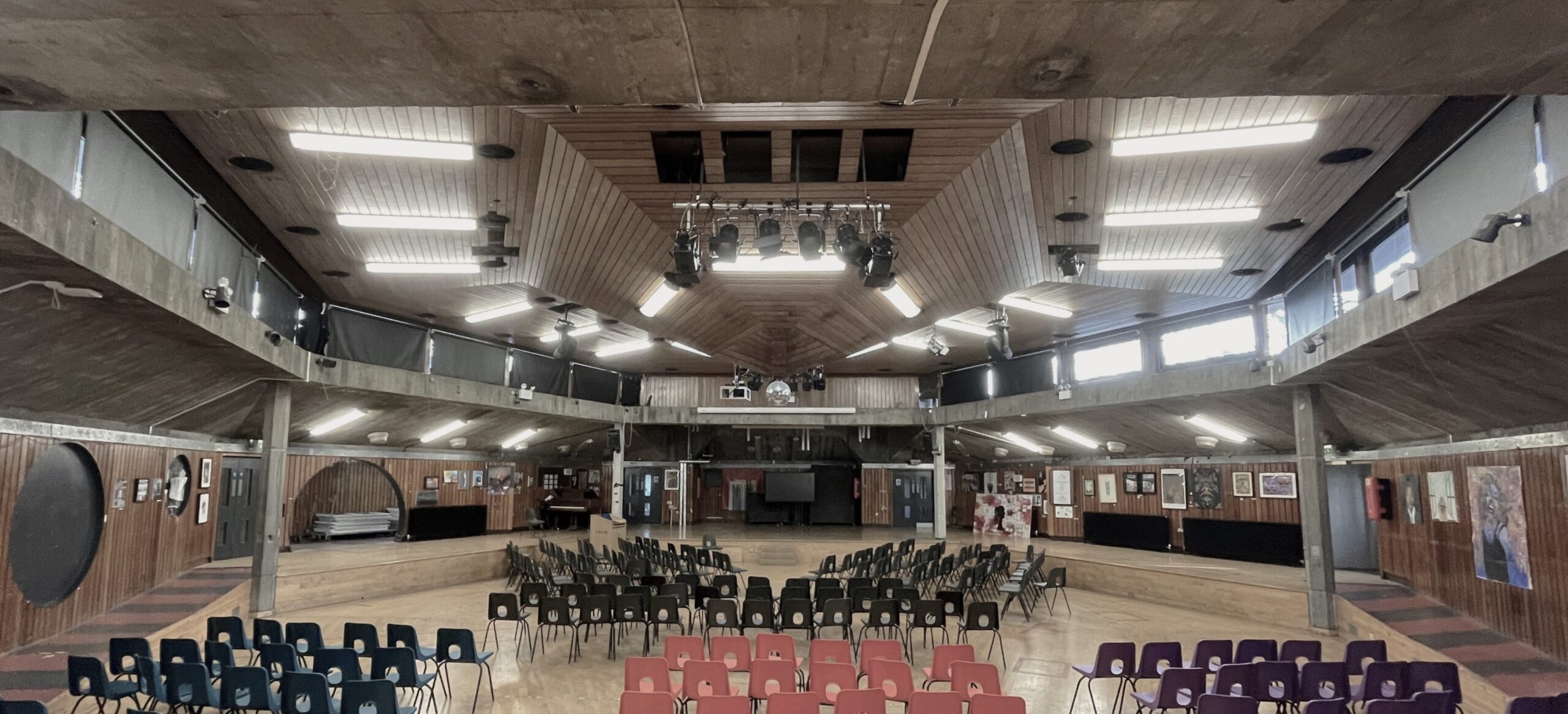CELEBRATING THE HERITAGE OF BRUTALIST ARCHITECTURE

MoBA aims to stimulate awareness of Brutalist architecture to amplify its cultural and heritage value and to explore, record, and celebrate the communities that live near or within these buildings
[ EXHIBITIONS ]
MUSEUM OF BRUTALIST ARCHITECTURE
We outline the history and aims of the museum, the origins of Brutalist architecture and its social and ethical ethos.
ACLAND BURGHLEY SCHOOL _ A BRUTALIST JEWEL
The exhibition describes the brutalist heritage of the school building, its history, and social ethos. Read more about how the school was created and the architects behind this incredible building.
BRUTALISM IS… IDENTITY THROUGH THE LENS OF YOUNG PEOPLE
The BRUTALISM IS… exhibition is created by young people who explored how Brutalist Architecture is perceived and how it can be represented.
Arrange a visit or a tour of MoBA‘s exhibition at the museum which is hosted in the Hall for All

MoBA is located at the ‘HALL FOR ALL’ in Acland Burghley School’s Brutalist Community, Culture and Heritage Venue
Located in North London it supports creative events, exhibitions and performance

Explore the Collections, learn more about the social heritage of Brutalist architecture, immerse yourself in stories, and discover more about its history and impact
Access knowledge and resources about Brutalist architecture
Explore brutalist architecture using MoBA’s interactive learning tools, see what people’s interpretations are of Brutalist architecture, see MoBA’s simple definitions and access free downloadable learning resources. You can even test your knowledge taking the Quiz
HISTORY AND BACKGROUND
MoBA is based at the ‘Hall for All’ a Community, Heritage and Arts venue in North London which supports creative events, exhibitions, and performance.
The venue is located within the grounds of Acland Burghley School and is an outstanding example of a 1967 Brutalist multi purpose space, hexagonal in plan form and designed by Howell, Killick, Partridge and Amis, one of the country’s foremost post-war architectural practices.

It was a post-war building marking an era of immensely significant social and economic history. This was a period when the country’s cities were still bomb-damaged and in need of upgrading and cities required many new buildings. This period represented the birth of Brutalist Architecture, buildings had to be low cost, simple, for the benefit of people and functional.
After World War II, a group known as the London County Council (LCC) decided to innovate the schooling system. They amalgamated Acland and Burghley schools in 1959 to establish a new one on the site where the Burghley Road school once stood.
Unlike traditional schools with different ‘houses’, the ingenious headmaster, L.A.V. Abley, introduced a unique concept. He structured the school into lower, middle, and upper sections, each housing two groups of students. This initiative aimed to foster strong connections among students, creating substantial friend groups within the school.
The architectural layout of the school reflects this vision catering to the three pairs of year groups. Some believe that the design and shape of the school draw inspiration from the road layout of Tufnell Park, where the roads converge at a single point. Additionally, the assembly hall, designed in an intriguing shape, was added following the demolition of the old schools.
Why is it a hexagonal shape?
Reed Watts, the architects for the restoration of the hall, say:
The Assembly Hall at the heart of the school is the most explicit reflection of this approach and was conceived as a focal point for school life and the wider community. The original headmaster is quoted as saying that “It wasn’t until we got [the hall] that we had the feeling that at last the school was one community. Now it is.”
The hexagonal space was designed as a double-ended auditorium to house everything from lectures to boxing matches and operatic performances. Over the years however, a number of insensitive alterations have compromised the integrity of the space and its usability.
The assembly hall was more than just an interesting shape; it was also an expression of the architect’s ethos of designing a democratic space that was accessible for all. The shape of the assembly hall results in excellent acoustics, particularly for music performances, ensuring that most places can experience the same quality of sound, whether they are located at the front of the audience or at the back. This is what is meant by democratic design.
Another example is the German architect Hans Scharoun. He designed the new Berlin Philharmonic concert hall (1956-1963) to much critical acclaim, embodying the same principles of unconventional forms, non-orthogonal walls and surfaces, and angled ceilings. The performances and their outcomes were described by some as ‘spatial magic.’
Much like the school assembly hall, the Berlin Philharmonie hosts concerts ‘in the round,’ allowing audiences to encircle the performer or musicians.
Contact Us
ABOUT THE MUSEUM OF BRUTALIST ARCHITECTURE MoBA
The Museum of Brutalist Architecture was founded by Urban Learners in partnership with Acland Burghley School with the support of the Heritage Fund.
What story can buildings tell. What are the signposts of brutalist architecture. How can we celebrate this important architectural movement and explore its connection with the people that use, experience, live, learn and work within or near them.
MoBA aims to connect a greater number and wider range of people with Brutalist architecture and its heritage
What is the cultural connection with Brutalist heritage architecture?
In the 1960s, large housing estates replaced Victorian slums, particularly in poor areas or those affected by war damage, with this bright, bold new architecture featuring spacious open-plan apartments connected by walkways. These walkways, sometimes wide, came to be known as ‘streets in the sky’. They provided spaces where children could play, neighbours could meet and socialize, fostering a sense of community. This communal spirit was the ethos behind many Brutalist estates such as the Whittington Estate. New residents enjoyed bright, clean homes with hot running water and indoor bathrooms—not always present in older Victorian houses.
However, by the 1970s, severe economic recession and neglect by local authorities, owing to lack of funds, led to the deterioration and neglect of these buildings. They lost their charm and sense of newness; the concrete dulled, and few repairs were made. In the eyes of many communities, these unloved buildings mirrored the neglect they felt. In some cases, the buildings were abandoned, left to their fate. They often failed to support the communities living within them, as residents’ voices went unheard and undervalued by authorities.
Brutalist architecture served as a canvas for artists and the creative industry, who viewed these structures as opportunities to craft a narrative, often portraying them in dystopian settings. Films like Blade Runner, Resident Evil: Afterlife, and A Clockwork Orange depicted these buildings as futuristic and ominous backdrops. However, these portrayals did not truly capture the lives of the communities residing in or near these structures. Films like The Kitchen shed light on the personal stories of individuals in extensive estates facing eviction for newer constructions, narrating a more human-centered tale.
The school, along with many other Brutalist buildings, holds the stories of the people who inhabited them. These narratives embody individuals’ creativity when influenced by their living community—it may recount tales of hardship through art, performance, dance, or music. It might share wisdom, knowledge, or memories. MoBA and the Hall for All serve as places where these stories are exchanged, offering a platform for voices to be heard.
MoBA aims to promote live performances within the hall, encouraging individuals to express their views and interpretations using their preferred medium. This act of performance enhances the cultural heritage of the Hall for All, aligning with the original ethos of Brutalist architecture.
The National Lottery Heritage Fund

Using money raised by National Lottery players, The National Lottery Heritage Fund supports projects that connect people and communities with the UK’s heritage. Hall for All and MoBA is made possible with The National Lottery Heritage Fund. Thanks to National Lottery players, we have been able to kick start the project and look to complete fundraising in 2025 as well as opening the physical museum in 2026.
The National Lottery Heritage Fund is the largest funder for the UK’s heritage. Using money raised by National Lottery players we support projects that connect people and communities to heritage. Our vision is for heritage to be valued, cared for and sustained for everyone, now and in the future. From historic buildings, our industrial legacy and the natural environment, to collections, traditions, stories and more. Heritage can be anything from the past that people value and want to pass on to future generations. We believe in the power of heritage to ignite the imagination, offer joy and inspiration, and to build pride in place and connection to the past.
Your Feedback Matters
Thank you for taking part in this MoBA questionnaire about the Digital Museum. Your thoughts and feedback will help us shape the future of MoBA
Mission: MoBA aims to stimulate awareness of Brutalist architecture to amplify its cultural and heritage value and to explore, record, and celebrate the communities that live near or within these buildings.
The website is an important part of MoBA and it has several features focussed on meeting its aims.
Please spend a few minutes navigating through the website and provide us with feedback on the form below.
By providing your name and email address we would like to keep you informed of further developments and progress. If you are not keen on this just leave your name and email blank.
We would like to gather information about your background, which will remain anonymous regardless of you adding your name or contact details. This information will help us understand who is engaging with MoBA so we can ensure a wide range of participation.
Visit the website and provide feedback visit: https://www.museumofbrutalistarchitecture.org

















